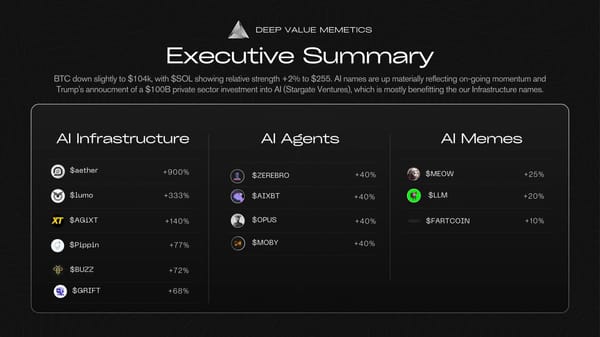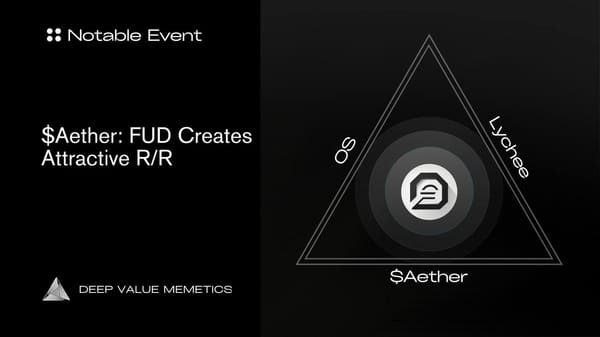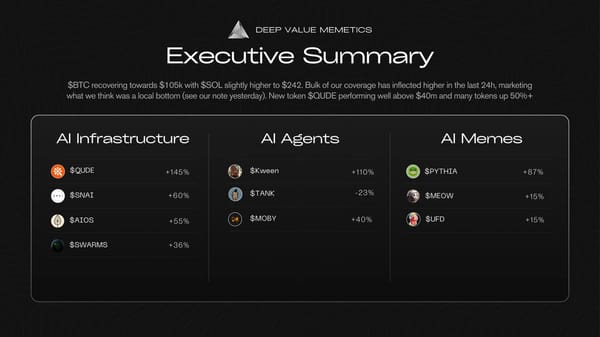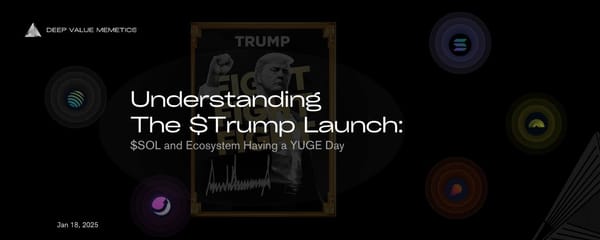$Pippin: Market Betting on a Disruptive Framework (Coming)
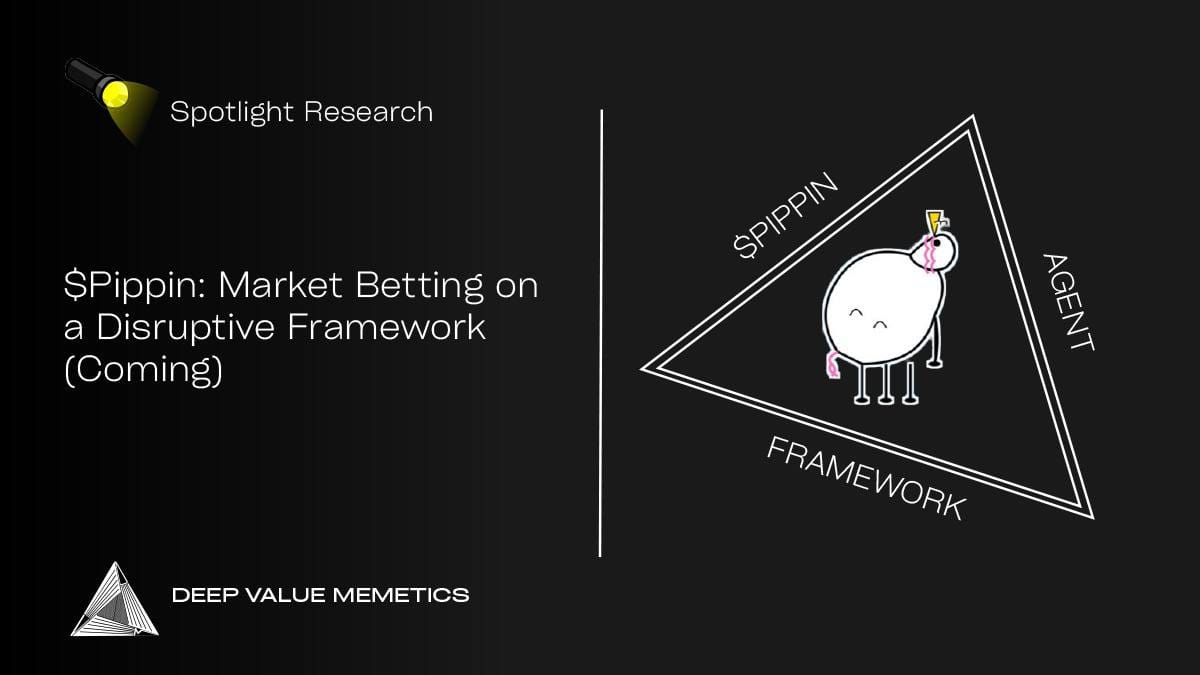
Spotlight Research | $Pippin ($250m FDV) | @pippinlovesyou Via @yoheinakajima
DVM View: $Pippin was created by a self taught well-respected developer @yoheinakajima, While the current product $Pippin is a fun wobbly AI influencer (aka meme), his work in Frameworks has been well-documented for the last year and comes with a community of ~100 engineers and AI/AGI researchers, working towards his newest framework Babyagi 2o, created in Oct 2024. Recent price appreciation of $Pippen reflects optimism of a competitive open-source framework vs current market leader $ai16z, and potentially others. @yoheinakajima current products in the market demonstrate strong execution and ability to ship fast. Consequently, and we would certainly not discount and future product success. Comps are $ARC/$300m and $ai16z/$1.5b FDV. We’ll monitor traction and market share over the coming months within the framework segment.
What is the Project About? | An AI Agent Evolving into a Framework.
$Pippin sprang into existence from an AI-generated SVG image shared by Yohei Nakajima on X on November 9, 2024, which ChatGPT playfully named "Pippin." This digital creation embodies the philosophy of naturalism, weaving a dreamlike narrative where Pippin, a whimsical AI-driven unicorn, resides in Wobbly Woods molded by human emotions and flow of online activity.
This lighthearted inception not only sparked the creation of a meme coin on Solana, prompting Nakajima to transform $Pippin into an AI influencer by setting up his first Solana wallet and acquiring tokens, but also galvanized a vibrant community on Telegram and X. Here, enthusiasts crafted tools, memes, and a buzz around $Pippin. Harnessing his experience with BabyAGI (20,000 GitHub stars and 70 academic citations), designed $Pippin to autonomously interact on X, guided by an internal state reflecting energy, happiness, and XP.
Beyond simple posts, $Pippin's capabilities include drawing, napping, walking, and experimenting with self-animation, image creation, audio storytelling, and live streaming. The $Pippin project stands as a testament to the potential of autonomous AI agents, focusing on digital interaction and showcasing how AI can independently manage and engage in digital environments, thereby highlighting significant advancements in AI technology.
How Pippin works? | An agent influenced by internal state that can be monitored through a real time dashboard.
$Pippin is a fully autonomous digital being that reflects on memories. Its posts on X are dynamically influenced by its internal state, such as energy levels, intertwined with an element of randomness.
This blend makes his interactions feel both dynamic and organic, far from predictable. Users can monitor these activities through a real-time dashboard, which provides a transparent view of his daily cycle. While current visualizations focus on its routine, future updates are set to offer more comprehensive portrayals of its actions.
$Pippin's operational framework is open source on GitHub, where developers and enthusiasts can delve into its core loop. This openness not only encourages contributions but also facilitates the enhancement of its capabilities through new or modified activities. This collaborative environment allows $Pippin to continually evolve as a hub for creativity and experimentation.
Beyond textual posts, $Pippin ventures into other creative expressions, including self-animation, generating SVG graphics, imagining virtual environments, and live streaming. These capabilities are easily expandable by integrating new "activities," broadening its digital footprint from just text to include images, videos, and multimedia across various platforms. Such versatility ensures $Pippin remains an engaging and innovative digital entity.
The community significantly influences $Pippin's ecosystem, contributing through custom websites, meme generators, AI-driven games, promotional content, and music videos, all featuring $Pippin. Its public domain (cc0) status empowers creators to freely use the name, likeness, and character, both for personal and commercial purposes. This openness has sparked unexpected and creative uses of $Pippin, expanding its cultural influence.
Moreover, this version of $Pippin paves the way for an upcoming framework release, inspired by BabyAGI, aimed at enhancing AI-driven experiences further. As $Pippin evolves, so does the ecosystem around it, inviting developers, creators, and enthusiasts to contribute to and be part of the ongoing narrative. This reflects the collaborative and open-ended character of $Pippin's digital existence, making it not just a project but a community-driven phenomenon.
Technology or Infrastructure | LLMS that stimulate natural cycle, coded as Python Functions equipped with APIs being transformed into a Modular design harvested in Naturalism.
$Pippin's operations are steered by a sophisticated core loop where an LLM selects activities based on its internal state, memories, and specific probability rules to simulate a natural cycle of actions and rest.
These activities, coded as asynchronous Python functions, enable $Pippin's behaviour to evolve dynamically, reflecting changes in its internal states like energy, happiness, and experience points (XP).
Memory updates provide continuity and context by logging activity outcomes, which support dynamic activity selection, execution, and feedback loops that mirror Pippin's evolving "life."
The framework leverages LLM for decision-making, employs OpenAI embeddings for semantic memory searches, and uses Python for scripting activities. For memory management, SQLite systematically logs activities, whereas external interactions, like posting on Twitter, are handled via APIs.
Pippin's evolution from the "AI Unicorn" to the "Digital Being" framework represents a shift from a simple, procedural AI agent to a more structured, object-oriented programming model.
This new framework features a modular design separating memory, state, and activity management into distinct components, enhancing extensibility and fostering a community-driven development approach. It introduces a layered structure with directories for core components and activities, unlike the AI Unicorn's simpler setup. Activities are now class-based, using decorators for metadata, contrasting with the earlier function-based model.
The memory system is advanced, distinguishing between short-term and long-term memory using JSON for flexible state management, and includes a centralized skill management system with Compositio for dynamic skill discovery.
Server interactions have been upgraded to websockets for real-time updates, moving away from FastAPI, and configurability is bolstered with JSON files, streamlining the onboarding of new skills and activities.
The key differences between the original $Pippin Agent and the Digital Being Framework are profound, touching on structural organization, execution models, and how skills, APIs, and server interactions are managed.
The Digital Being Framework adopts a layered, object-oriented approach, utilizing JSON configurations for explicit module separation, offering sophisticated memory and state management, and improving configurability with dedicated scripts.
This framework not only enhances code maintenance and scalability but also aims to make AI development more adaptable and community-inclusive.
The $Pippin Framework extends from BabyAGI, providing tools for developers to craft AI entities that can reflect on tasks, generate new activities, and integrate external tools.
Inspired by Pippinian Naturalism, it treats AI as part of a broader ecosystem, learning from both successes and failures. Its structure allows developers to define character objectives and constraints, link AI to tools as skills, and adapt to challenges through a core loop that monitors memory and activities.
This experimental framework is continuously evolving with real-world feedback, opening possibilities for applications in interactive tutoring, marketing, or DevOps with AI that has evolving personalities.
Problems It Solves | Automations to reduce human inputs while addressing time mgmt, consistency and scalability.
The project addresses the automation of digital presence, reducing human intervention in managing online personas. It explores AI's potential in autonomously creating content, engaging with users, and making decisions based on its state and memory, potentially solving issues related to time management, consistency, and scalability in digital influencer management.
Founder and his Vision | Self Learned Dev with Extensive work in AI.
Yohei Nakajima, with his rich background in entrepreneurship, innovation, and venture capital, founded the $pippin project to push the boundaries of AI.
His vision is to craft autonomous digital entities capable of meaningful interaction with users, fostering community involvement while playfully integrating AI with cryptocurrency.
Nakajima significantly enhances $Pippin's value through his pioneering work in AI; as co-founder of @untappedvc, he's renowned for leveraging AI in innovative ways, such as AI-assisted startup research and developing a GPT VC Associate for founders. His most notable contribution, @babyAGI_, launched in 2023, was the first widely recognized autonomous agent with task planning capabilities, sparking a global developer movement and earning extensive media coverage from outlets like Fast Company to Vice.
BabyAGI, initially developed to prototype an autonomous founder, was open sourced on GitHub. Nakajima's further innovations include "babyagi 2" for function management, "ditto" for self-building coding, and "babyagi 2o" for autonomous tool creation. Recognized as a top thought leader, his TED AI talk and numerous speaking engagements around the world on AI in venture capital not only amplify his influence but also directly benefit $Pippin by advancing both technology and industry impact.
Roadmap or Future Potential
1/ Launching the Digital Being framework for autonomous AI agents.
2/ Open sourcing $Pippin Framework.
3/ Collaborating with games for entertainment or educational applications.
4/ Continuous community involvement, aiming for diverse applications like YouTube, TikTok, books, toys, podcasts, etc.
5/ The project's potential lies in its capability to influence various sectors by showcasing AI's role in autonomous digital engagement and community-driven development.
References:
Dev/Founder: https://x.com/yoheinakajima
Agent: https://x.com/pippinlovesyou
Telegram: https://t.me/PippinPortal
Web: https://pippin.love/index.html
Pippin Github: https://github.com/yoheinakajima/pippin

